Basic Bicycle Cleat Position
I had a reader message me with a question about bicycle cleat position and thought I would share (and expand) my response:
Hello I have a question about cleat fitting.What if I ride without my cycling shoes and look at my feet position and adjust cleats according it. So my cycling shoes will be in this position, it will be more natural. Please let me know what you think
I think that's a reasonable way to go about it. The best case scenario for trying something like this would be to find flat pedals with a very smooth surface -- you could tape a couple pieces of cardboard to some cheap flat pedals. Pedal barefoot and pay attention to a couple things, but focus only on one leg at a time.First estimate where the toes are pointed at the top of the pedal stroke (12 o'clock), middle of the power phase (3 o'clock when viewing the right side) and at 6 o'clock. Don't worry, you don't have to be hyper-accurate with this, just try to get a bead on what direction the toes are pointed in general and how much difference you see throught these 3 different positions.It might help to see how close to the crank arm your heel gets during this phase of the pedal stroke.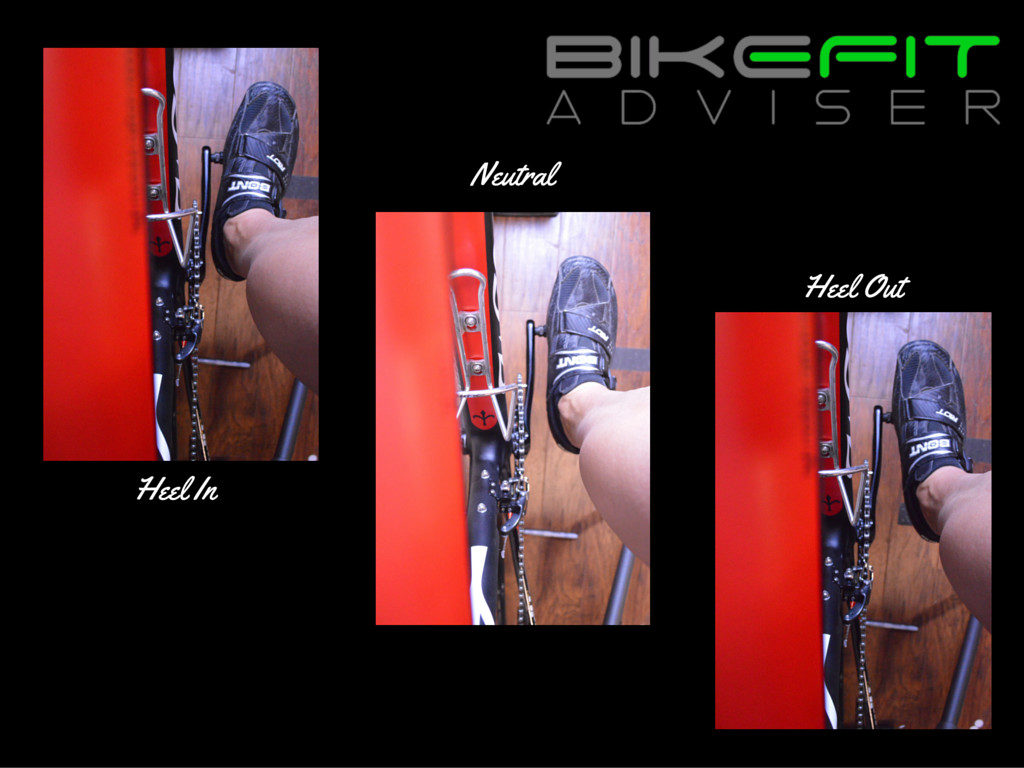 Often I will have a client with the decals or even the anodizing rubbed off on one crank and not the other -- if that's the case then I might guess we're going to need to have that cleat adjusted to be allowed to "toe out".
Often I will have a client with the decals or even the anodizing rubbed off on one crank and not the other -- if that's the case then I might guess we're going to need to have that cleat adjusted to be allowed to "toe out".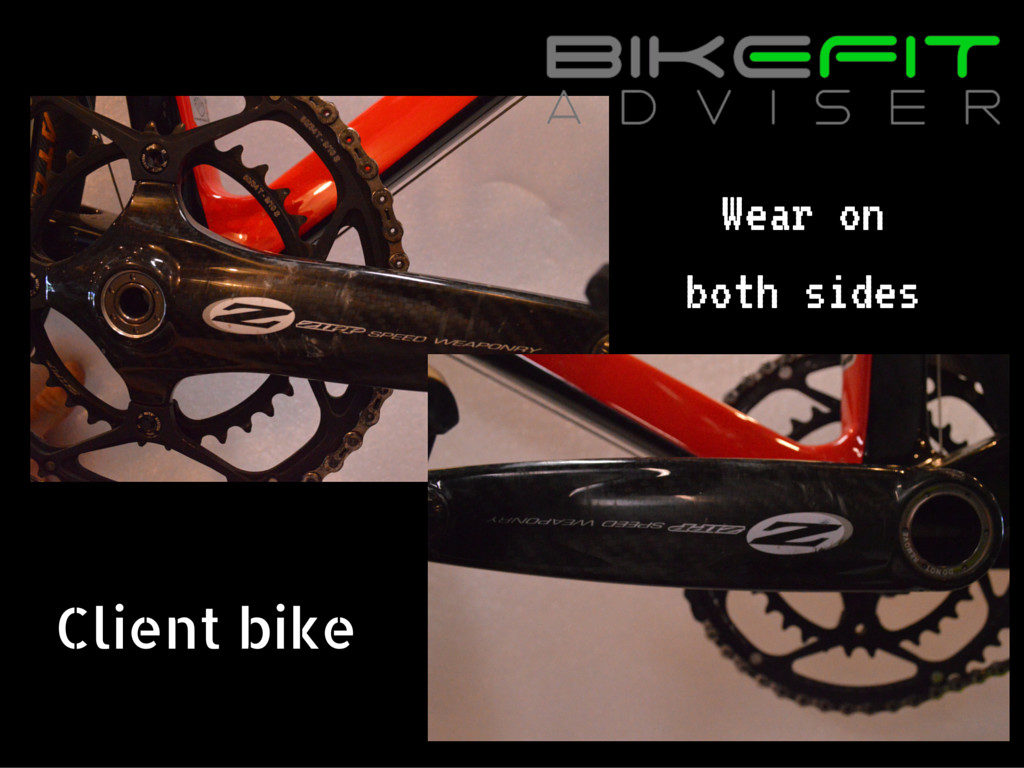
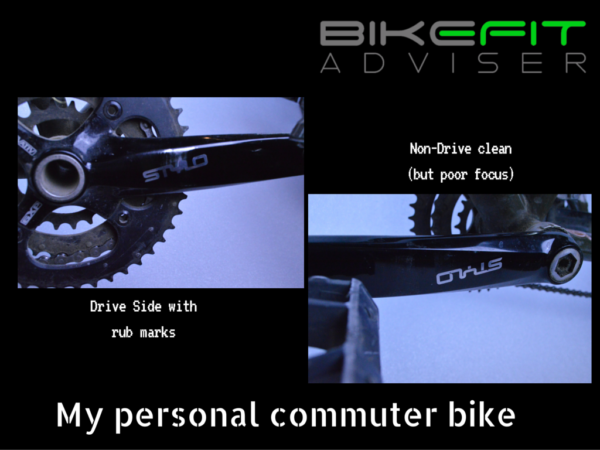 Now let's look at the position of the heel when you're on the back side of the pedal stroke. What we're concerned with is how close to the chainstay does the heel get. It might help to have a friend estimate this distance, and again, it's not critical that you're measuring this to the millimeter -- just get an idea of how close this is.
Now let's look at the position of the heel when you're on the back side of the pedal stroke. What we're concerned with is how close to the chainstay does the heel get. It might help to have a friend estimate this distance, and again, it's not critical that you're measuring this to the millimeter -- just get an idea of how close this is. 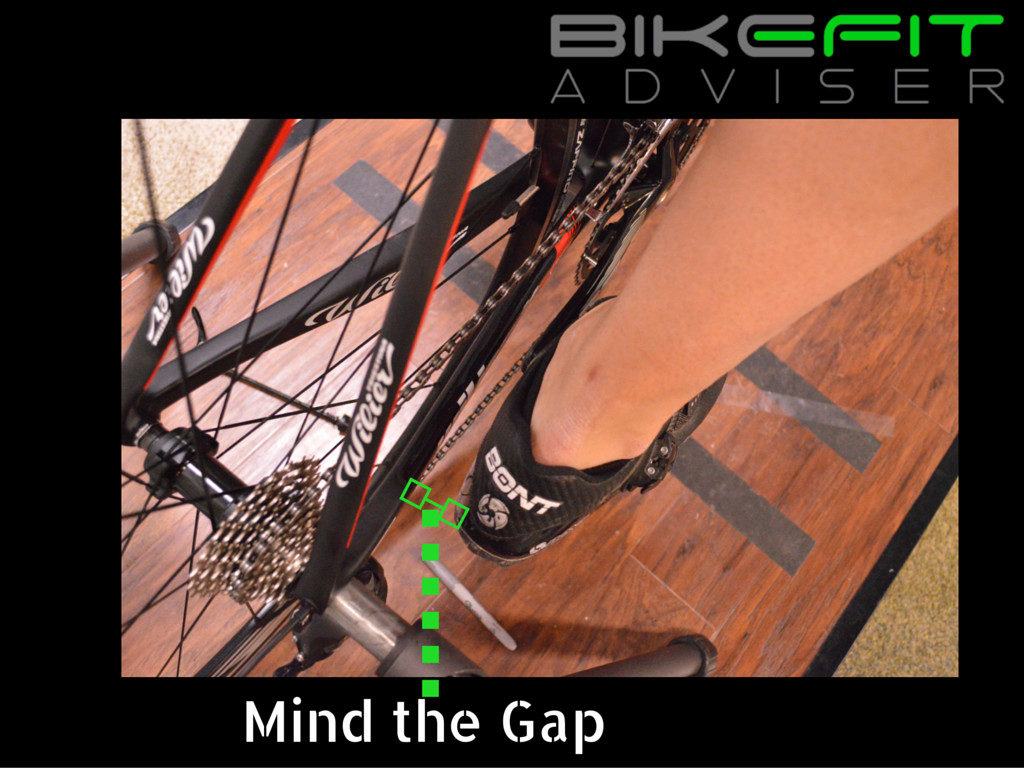
What about walking pattern and gait?
Even though standing/walking mechanics aren't exactly the same as on the bike, also looking at how you posture and move your feet and lower leg can inform us on what position you feet should be in on the bike as well. If you tend to walk or stand with one foot toe out more, then you might try having that foot toe out a bit more on the bike.
Changing bicycle cleat position
The last point I want to make is to not get turned around when adjusting the cleats....many clients make this mistake and move the cleat the wrong direction.When we're looking at our cleat on the bottom of the shoe we have to think in opposites.
- If you want to "toe OUT" more on one side, you need to toe the cleat IN
- If you want your foot to "toe IN" more, you need to toe the cleat OUT
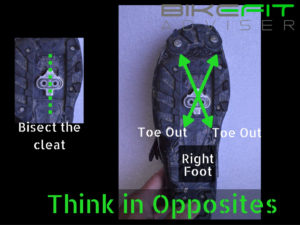 Good luck and if you have any questions about this or other articles, leave a comment below.[wlm_loginform]
Good luck and if you have any questions about this or other articles, leave a comment below.[wlm_loginform]
